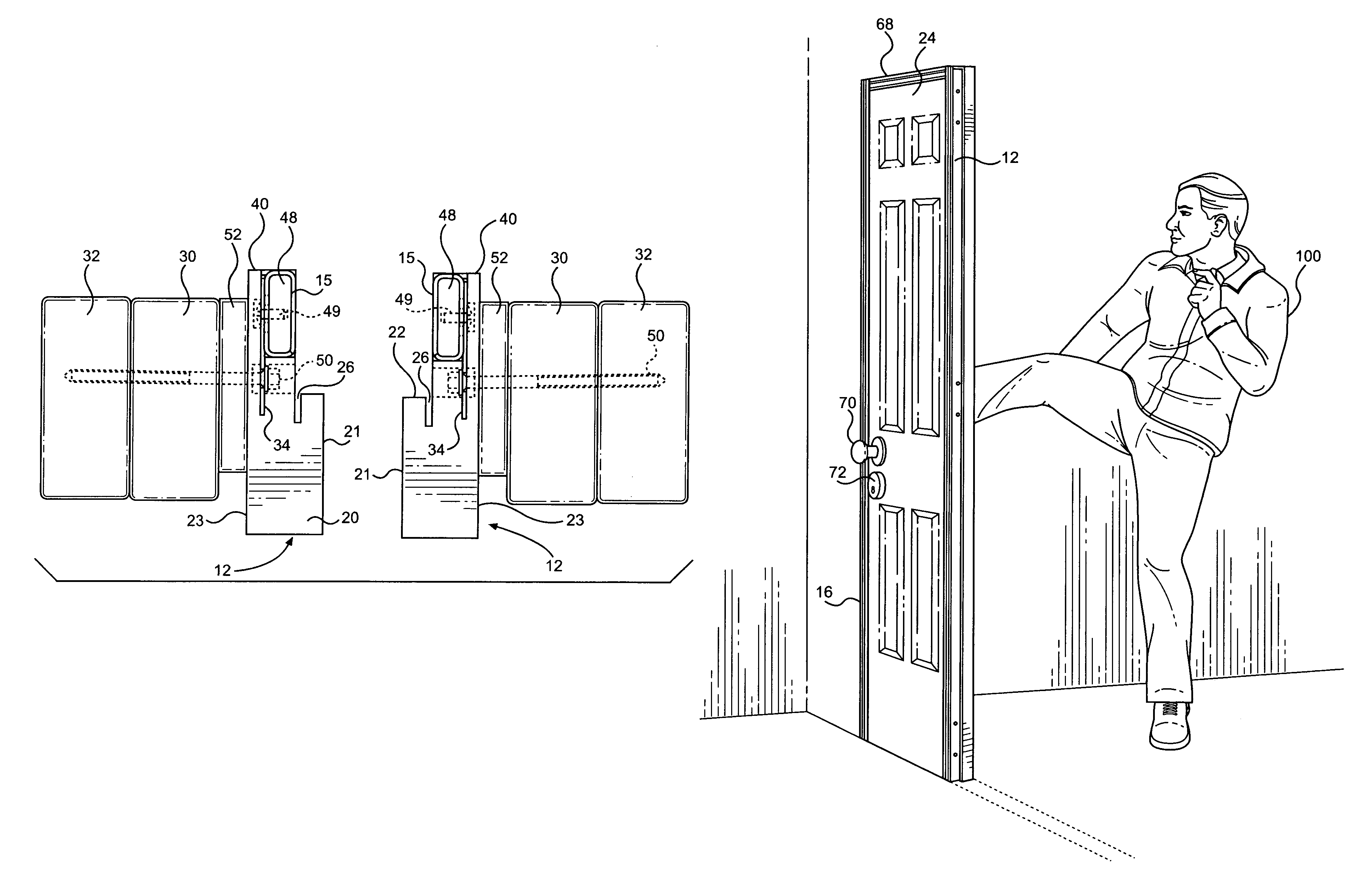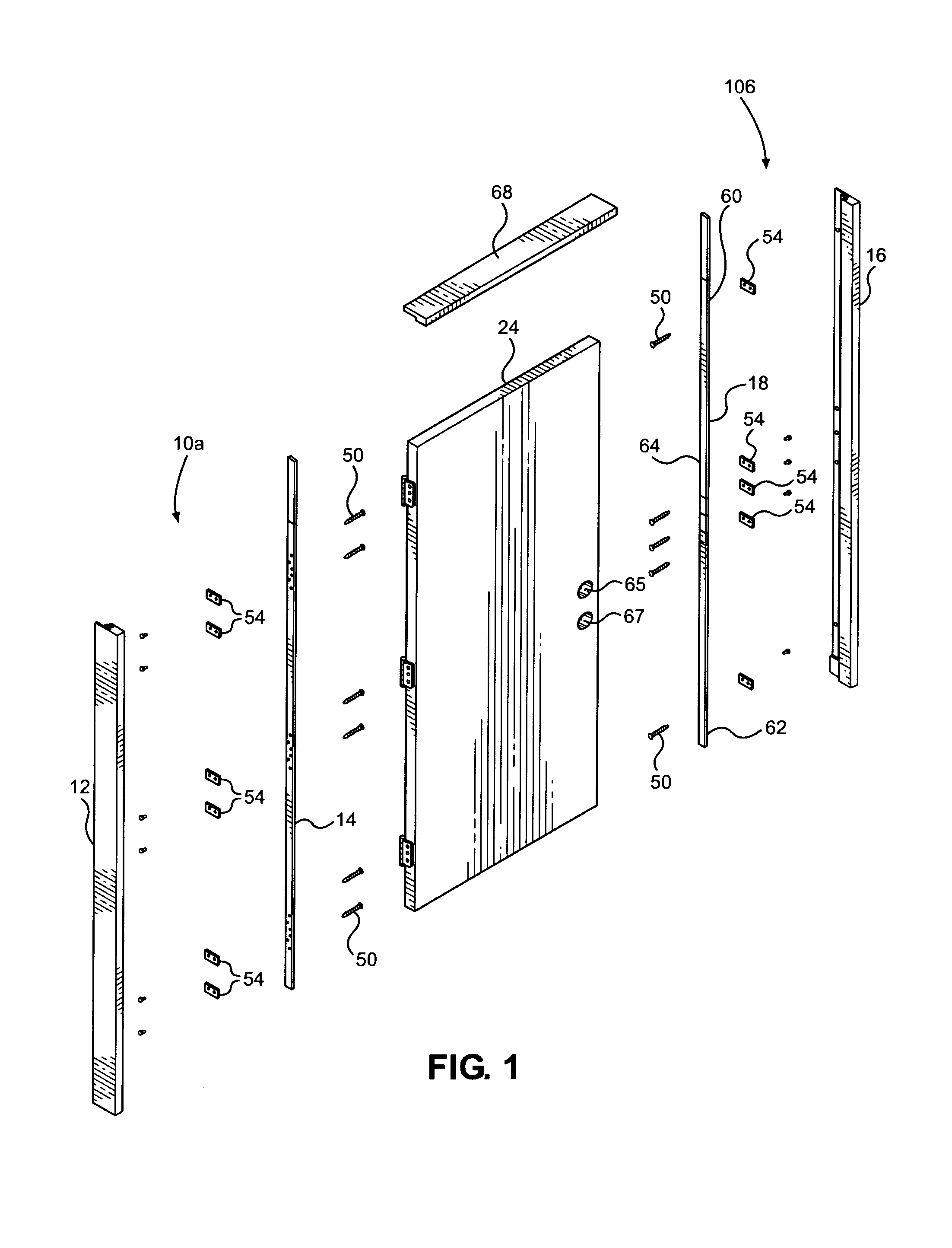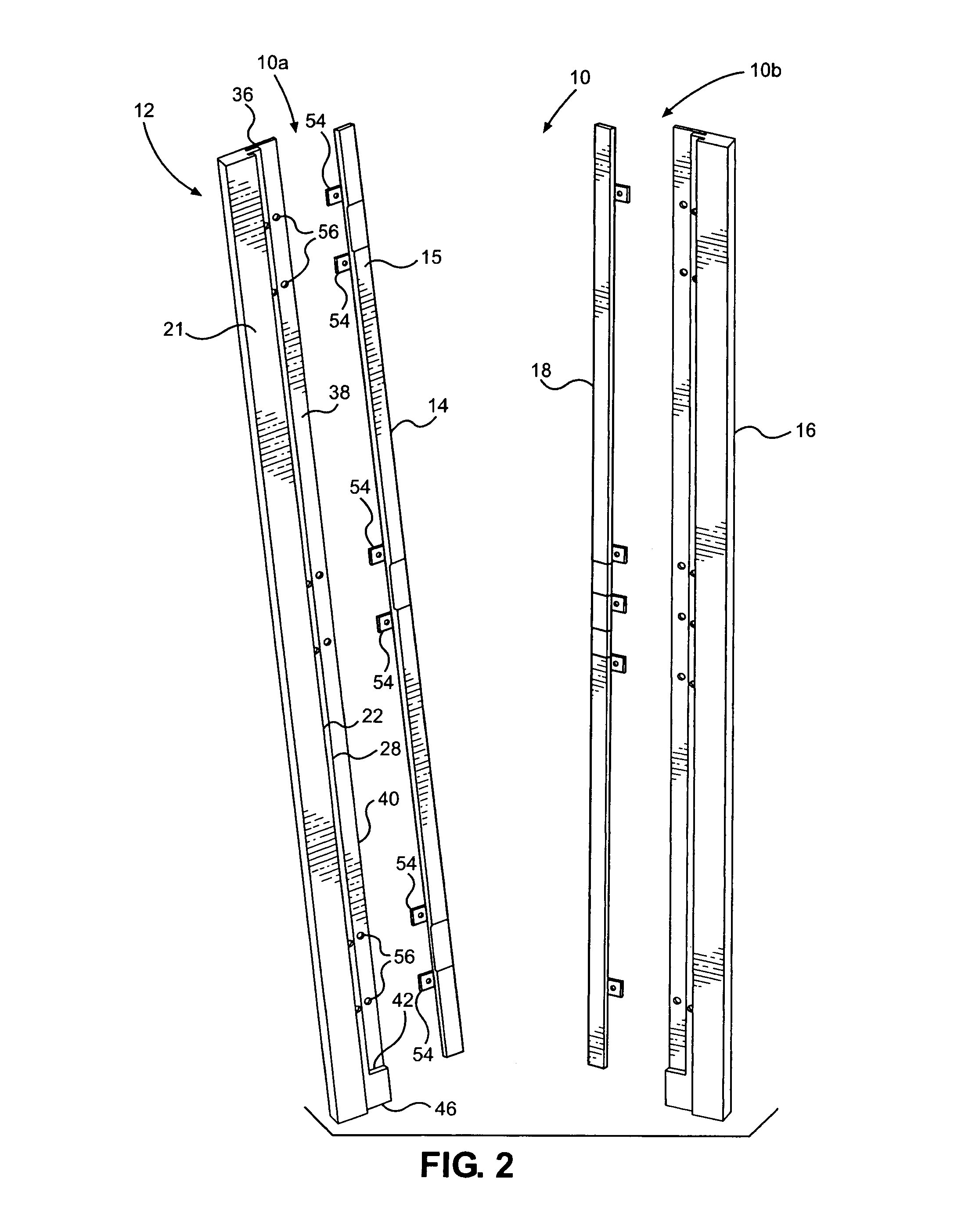Door frame reinforcement assembly
- Summary
- Abstract
- Description
- Claims
- Application Information
AI Technical Summary
Benefits of technology
Problems solved by technology
Method used
Image
Examples
Embodiment Construction
[0021]Turning now to the drawings in more detail, numeral 10 designates the door frame assembly according to the present invention, with numeral 10a designating a hinge side subassembly and numeral 10b designating the strike side subassembly. The hinge side subassembly 10 comprises an elongated hinge side door jamb member 12 and an elongated hinge side reinforcement member 14. The subassembly 10b comprises a strike side door jamb member 16 and an elongated strike side reinforcement member 18. The hinge side jamb member 12 is a minor image of the strike side jam member 16, and the hinge side reinforcement member 14 is a minor image of the strike side reinforcement member 18.
[0022]The hinge side jamb member 12 differs from the strike side jamb member 16 in the number of securing fasteners securing the jamb member to the reinforcement member. The hinge side reinforcement member 14 differs from the strike side reinforcement member 18 by the number of securing fasteners and the number of...
PUM
 Login to View More
Login to View More Abstract
Description
Claims
Application Information
 Login to View More
Login to View More - R&D
- Intellectual Property
- Life Sciences
- Materials
- Tech Scout
- Unparalleled Data Quality
- Higher Quality Content
- 60% Fewer Hallucinations
Browse by: Latest US Patents, China's latest patents, Technical Efficacy Thesaurus, Application Domain, Technology Topic, Popular Technical Reports.
© 2025 PatSnap. All rights reserved.Legal|Privacy policy|Modern Slavery Act Transparency Statement|Sitemap|About US| Contact US: help@patsnap.com



